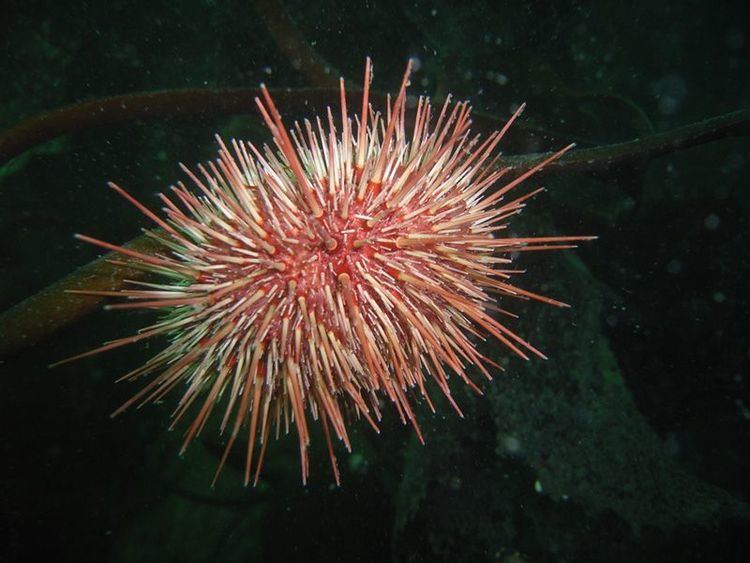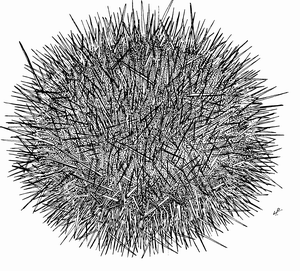Kingdom Animalia Scientific name Loxechinus albus Rank Species | Class Echinoidea Genus Loxechinus Phylum Echinodermata | |
 | ||
Similar Tetrapygus niger, Echinidae, Fissurella, Concholepas concholepas, Red sea urchin | ||
Loxechinus albus or Chilean sea urchin is an echinoderm of the family Parechinidae, native to the coasts of Chile and Peru. It is found shallowly buried in fine sand, and muddy sand, beaches at and below low tide level.
Contents

Description

L. albus has a test which is dorsoventrally flattened and densely covered in small spines, with a maximum width of about 100 millimeters. The urchin is typically greenish in color, occasionally with red markings on the ambulacrum and interambulacrum, although some large specimens have been found in deeper waters which are white in color. There are 6 to 11 ambulacral plates each bearing a single short primary spine and many longer secondaries. The globiferous pedicellariae have a neck between the stem and head, large valves and several lateral teeth.
Biology

L. albus is mostly found on rocky coasts associated with the kelp Macrocystis pyrifera. It is more numerous in exposed locations. It is a herbivore and seems to feed on whatever species of alga grow nearby. Juveniles feed on crustose coralline algae, diatoms and algal detritus. In the Northern Hemisphere, some urchin species have large population swings and may create "barren ground" around them. In contrast, L. albus seems to be in balance with its food supply and does not seem to be limited by the quantity of algae available nor does the kelp growth become excessive. This may be partly because it also feeds on drifting algal fragments which are always abundant in kelp beds.

The spawning period varies along the Chilean coast. Spawning period occurs later in the year as latitude increases; at 23° S it occurs in June, at 45° S (Chiloé) it occurs in November-December. The populations inhabiting the Magellan Region ( 53° S) are an exception since their spawning period lasts from July to September.
The echinopluteus larvae form part of the zooplankton for about thirty days, feeding on phytoplankton. They settle in the rocky intertidal zone and undergo metamorphosis, living in cracks in the rocks as juveniles before migrating to the neritic zone where they mostly feed on drift algae and fronds of kelp.
Uses
Known locally in Chile as the 'Erizo rojo' (red urchin), it is harvested commercially by fishermen and is an ingredient in Chilean cuisine. Over-exploitation, its conspicuousness and lack of official harvest control means that this urchin is relatively rare in some parts of its range. It takes 8 years to reach harvestable size.
